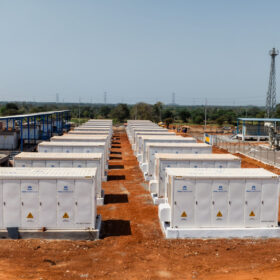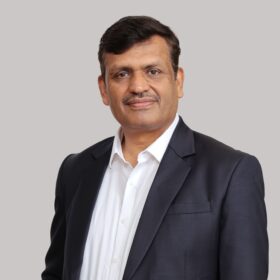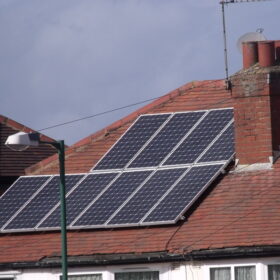Solar Energy Corp. of India (SECI) has awarded an annual production capacity of 70,000 metric tonnes (MT) of green ammonia to SSC Infrastructure at a price of INR 53.05 per kg. The capacity was allocated through the fourth electronic reverse auction (e-RA) conducted under Tranche-I, Mode-2A of the Ministry of New and Renewable Energy’s SIGHT Scheme.
SSC Infrastructure will supply the green ammonia to Madhya Bharat Agro Products Ltd’s plant in Dhule, Maharashtra.
With this latest award, SECI has allocated a total green ammonia production capacity of 275,000 MT per annum across four e-RAs, with prices ranging from INR 51.80 to INR 55.75 per kg. Previous winners include ACME Cleantech (75,000 tpa at INR 55.75/kg), NTPC Renewable Energy (70,000 tpa at INR 51.80/kg), and Oriana Power (60,000 tpa at INR 52.25/kg).
The EIA, an agency of the US government, said that in most scenarios for the US hydrogen market, production will rise by about 80% in 2050 compared with 2024, with most hydrogen (H₂) coming from natural gas via steam methane reforming (SMR). “In most cases, we project less than 1% of hydrogen will be produced via electrolyzers, which use electricity to produce hydrogen from water, regardless of supportive policies,” said the agency, noting that its scenarios reflect conditions before the election of US President Donald Trump. The report said the volume of gray hydrogen produced in 2050 will depend on oil and gas prices, the chemicals market, and demand. The EIA added that hydrogen consumption rises mainly in the transportation sector when policy standards drive deployment of fuel cells in heavy-duty vehicles, but growth remains negligible without such policies.
Statkraft has confirmed its plans for the Shetland Hydrogen Project 2 after agreeing to lease a site owned by Shetland Islands Council in the United Kingdom. “The proposed scheme is an electrolytic hydrogen to green ammonia production facility of up to 400 MW, on land adjacent to the disused Scatsta Airport near the existing Sullom Voe Oil Terminal and Shetland Gas Plant,” said the Norwegian energy company. It said the green ammonia will also be used for sustainable fuels for marine shipping and to decarbonize fertilizer production. Statkraft has three wind farms on Shetland in pre-construction: Mossy Hill near Lerwick, and Energy Isles and Beaw Field on Yell. “The construction of schemes like Shetland Hydrogen Project 2 will allow excess renewable power that cannot be utilized by the grid to be transformed into hydrogen.”
GeoPura has acquired assets in Denmark and hired personnel from Green Hydrogen Systems (GHS), laying the groundwork for European expansion. Under the agreement, GeoPura has taken ownership of all spare parts, tools, and fixtures related to the A-Series electrolyzer platform. “In addition, former GHS employees with deep technical expertise in the support, design, and operation of A-Series electrolyzers have joined the GeoPura team,” said the British company.
Horizon Fuel Cell Group said it has acquired the intellectual property of US-based Hyzon Motors to continue serving Hyzon’s hydrogen vehicle customers in the United States, Europe, Australia, and New Zealand. “Hydrogen is the ultimate clean solution for long-haul transportation and other heavy vehicle operations, and will soon be more financially attractive than diesel or battery alternatives,” said George Gu, chairman of Horizon Fuel Cell Group.
Hyundai Motor Group said it has, in partnership with Neom‘s energy and water subsidiary Enowa, completed a hydrogen mobility trial in Trojena, in the mountains of Neom. “The group operated its hydrogen fuel cell electric vehicle (FCEV) coach bus, Universe, on a mountainous route in Trojena, reaching elevations of up to 2,080 meters and gradients of 24%. Simulating passenger transport from Neom’s future core business district to Trojena, the trial demonstrated vehicle performance and the practicality of hydrogen in high-altitude conditions,” said Hyundai Motor. The South Korean group has begun commercial sales of the 2026 model of its Universe fuel-cell bus, which has a range of up to 960.4 kilometers.
Rolls-Royce has formed a strategic partnership with Germany’s Ineratec to replace fossil diesel in data centers’ emergency power systems with synthetic fuels produced from renewable hydrogen and CO₂. “The companies intend to use Ineratec’s synthetic e-Diesel for generators. Initially, the focus will be on German data centers,” said Ineratec, adding that the synthetic fuels are a cost-efficient solution.
This content is protected by copyright and may not be reused. If you want to cooperate with us and would like to reuse some of our content, please contact: editors@pv-magazine.com.









By submitting this form you agree to pv magazine using your data for the purposes of publishing your comment.
Your personal data will only be disclosed or otherwise transmitted to third parties for the purposes of spam filtering or if this is necessary for technical maintenance of the website. Any other transfer to third parties will not take place unless this is justified on the basis of applicable data protection regulations or if pv magazine is legally obliged to do so.
You may revoke this consent at any time with effect for the future, in which case your personal data will be deleted immediately. Otherwise, your data will be deleted if pv magazine has processed your request or the purpose of data storage is fulfilled.
Further information on data privacy can be found in our Data Protection Policy.